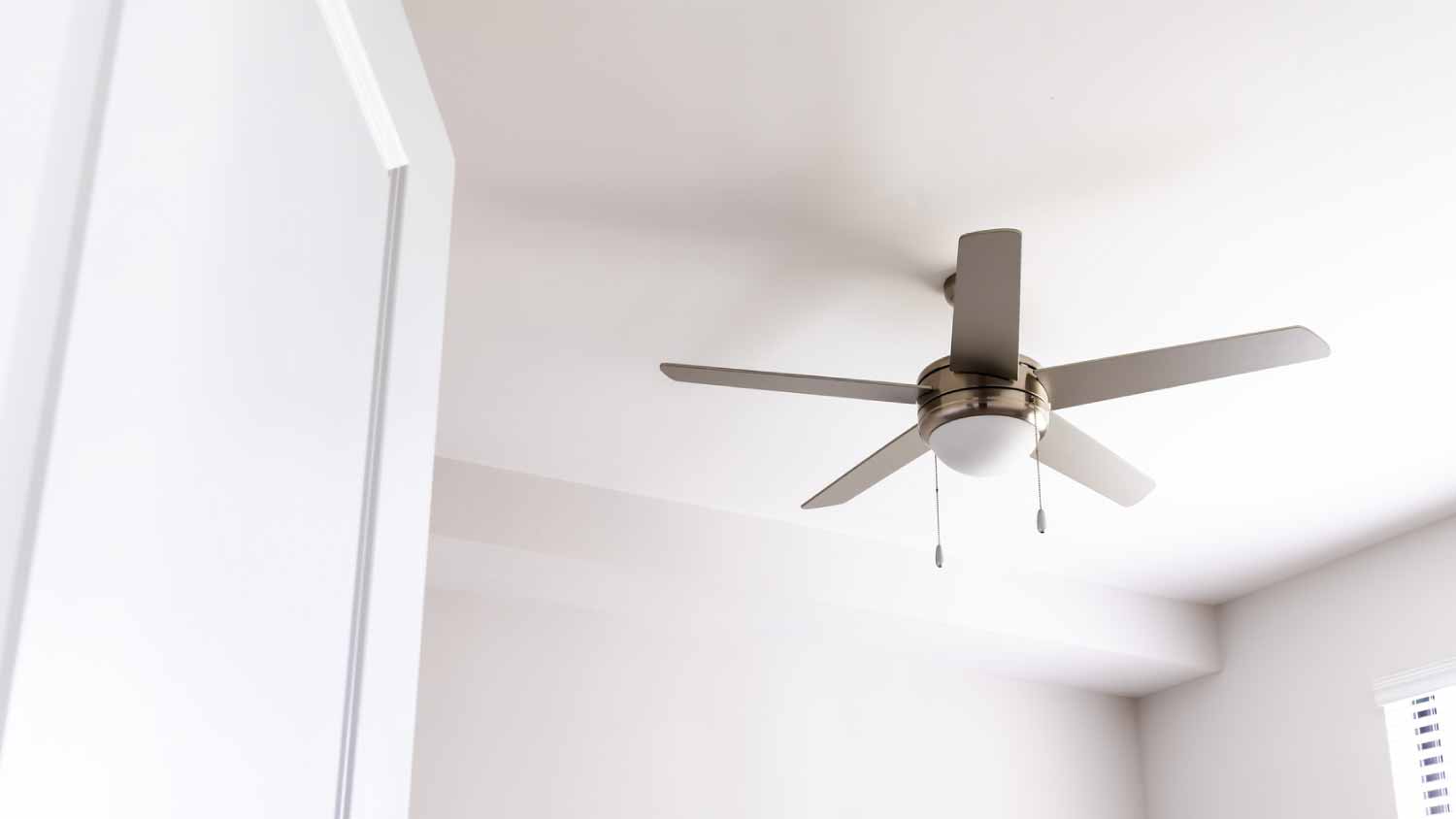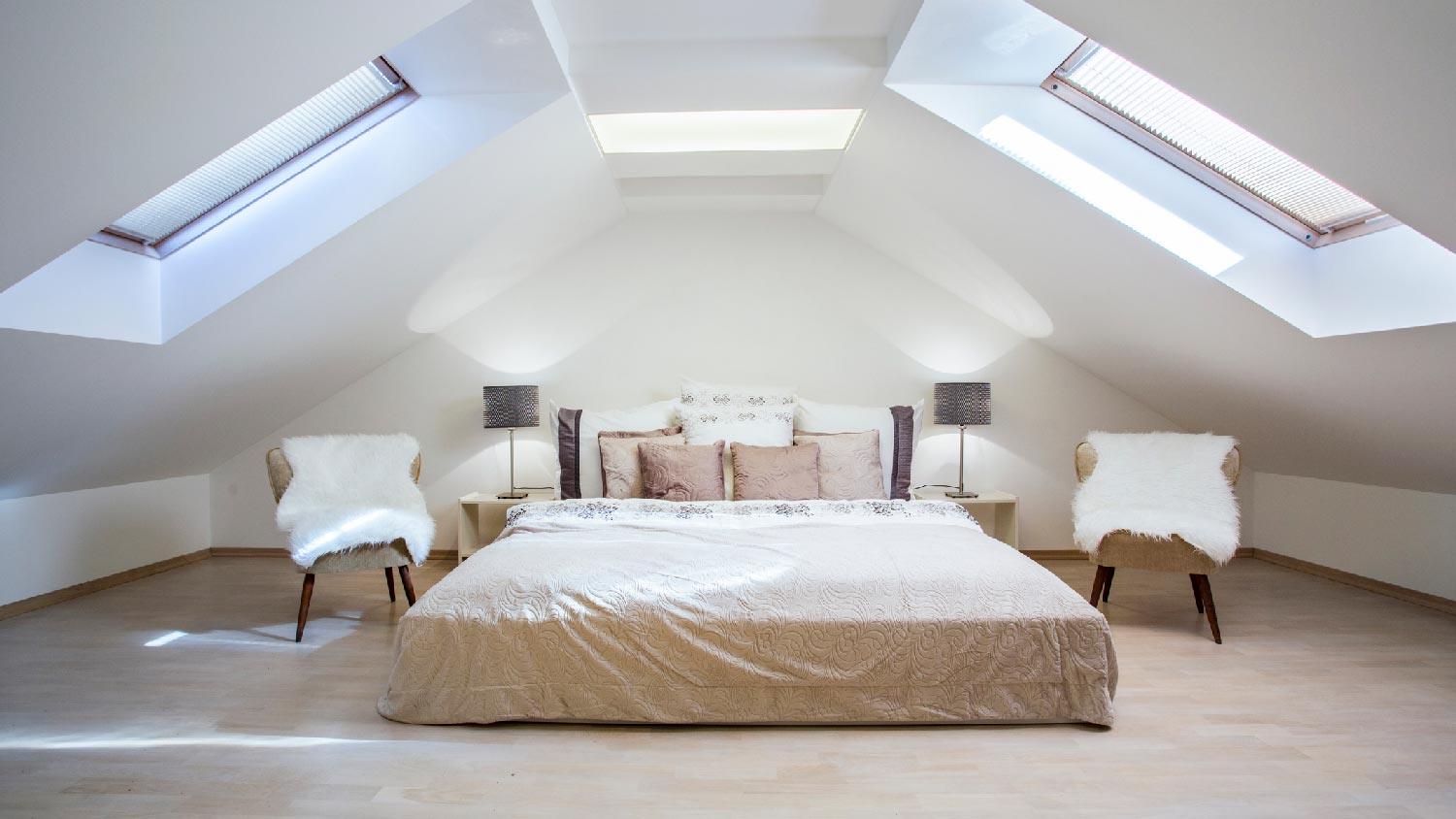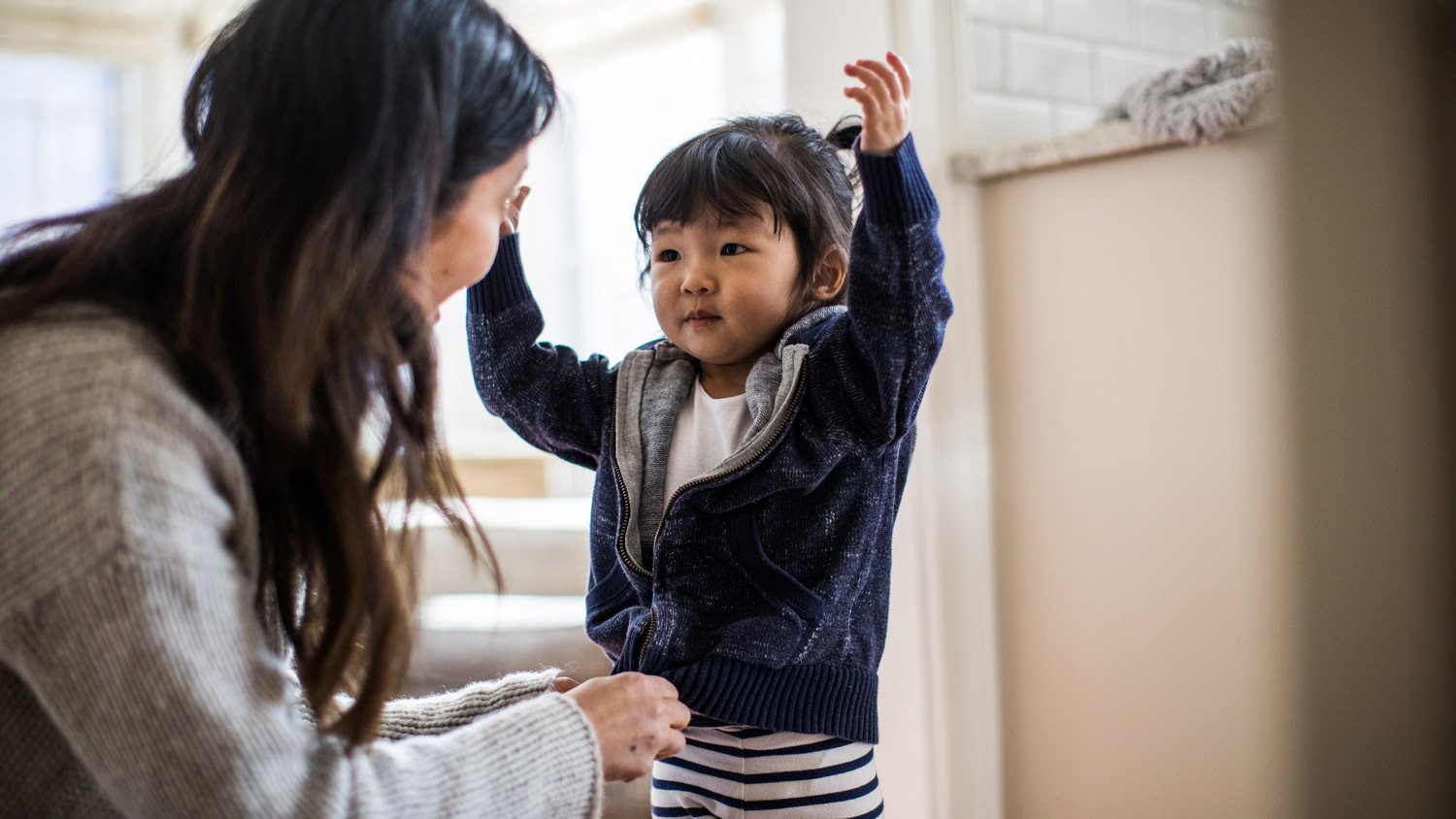Discover 3 Different Types of Thermostats and Pick the Right One for Your Home
No frills or all the bells and whistles? Take your pick


Thermostats have come a long way in recent years, evolving from mercury-filled boxes with manual dials to internet-connected devices with their very own smartphone apps. These days, if you’re in the market for a new one, you can choose from several different types of thermostats, including non-programmable, programmable, and smart thermostats.
So, which of these three types of thermostats is best for your home? Let’s look at the basics of each option.

1. Manual/Non-Programmable Thermostats
Manual or non-programmable thermostats are the most traditional and basic kind of thermostat.
They come in mechanical and digital models and are most often found in older homes.
Unlike the other types of thermostats, a non-programmable thermostat doesn’t have any automatic settings, so you’re in complete control of turning your heating and cooling on and off and setting a comfortable temperature. Every time you want to adjust it, you’ll have to do so manually—either by turning a dial (on a mechanical model) or by pushing buttons (on a digital version).
| Pros | Cons |
|---|---|
| Affordable | Must be adjusted manually |
| Easy to use | Limited energy savings |
| Offers more control | Lack of features |
Best for: Anyone who lives in a moderate climate where temperatures don’t fluctuate much
2. Programmable Thermostats
Programmable thermostats automate your home’s heating and cooling so that you don’t have to change the settings by hand. If you have one of these thermostats, you can create custom settings to lower or raise the temperature at certain points of the day or on specific days of the week.
Plus, you can use this functionality to automatically set your thermostat to the best temperature for energy savings depending on the season, which is a great way to reduce your energy usage and lower your utility bills. In fact, according to the U.S. Department of Energy (DOE), you can cut your yearly heating and cooling costs by up to 10% by keeping your thermostat 7 to 10 degrees above (in summer) or below (in winter) your normal temperature.
| Pros | Cons |
|---|---|
| Saves energy and money | Pricier than manual models |
| Increases comfort in your home | Takes time to set up |
| Customizable | Not compatible with all HVAC systems |
Best for: People willing to spend time programming their thermostat in exchange for better energy efficiency
3. Wi-Fi/Smart Thermostats
Wi-Fi or smart thermostats are the most advanced and priciest type of thermostat. These internet-connected devices let you control your home’s temperature from an app. So, if you’re on your way home during a snowstorm, you can crank up the heat for a toasty arrival.
Certain smart thermostats will set up automatic heating and cooling programs based on your typical energy consumption. Some will allow you to track your usage, making it easy to see where you can conserve energy. The most sophisticated thermostats can flag potential problems with your system and remind you when it’s time for HVAC maintenance.
| Pros | Cons |
|---|---|
| Energy efficient | Most expensive option |
| Convenient | Some tech know-how required |
| Integrates with other smart devices | Won’t work with some HVAC systems |
Best for: Tech-savvy folks who want advanced heating and cooling features
When to Replace Your Thermostat
So, how do you know when it’s time for a new thermostat? If you experience any of these bad thermostat symptoms, it might be time for an upgrade:
Your thermostat is unresponsive or won’t turn on.
The temperature in your home doesn’t match what your thermostat says.
Your thermostat won’t stick to its programmed settings.
Your HVAC system doesn’t respond when you adjust the thermostat.
Your HVAC system short cycles.
But before you call in a pro, there are a few things you can try first. Here’s a quick overview of how to troubleshoot your thermostat:
Verify whether or not your thermostat has power.
Check its program settings.
Clean the thermostat.
Make sure it’s level and in an optimal location that’s away from sunlight, drafty areas, and heat sources.
Fix any loose or corroded wires.
Keep in mind that repairing a thermostat involves working with electrical components, so be sure to hire an HVAC expert or electrician for the job.
How to Choose the Right Type of Thermostat
If you’re not sure which type of thermostat is best for your home, reach out to a local thermostat installer to discuss your options. Your HVAC system might only be compatible with certain kinds of thermostats, so it’s a good idea to understand what’s possible in your home before choosing a specific type of thermostat.
From there, consider your budget and decide which features you want in a thermostat. Don’t want to break the bank? A manual model might be best. On the other hand, if you’re willing to spend a bit more money on a thermostat that supports automatic heating and cooling cycles, you could consider a programmable thermostat.
Let’s say you’re curious about which type of thermostat provides the closest temperature control or has the most advanced features. In that case, smart thermostats are your answer.
Frequently Asked Questions
With good maintenance and care, a thermostat will last 10 years. However, your thermostat’s life span could be shorter or longer, depending on the type of thermostat and how well you look after it. Not sure if it’s time to replace your thermostat? You might need a new one if yours is unresponsive, won’t maintain its settings, or displays the incorrect temperature.
On average, installing a new thermostat costs between $110 and $260 (including labor). If the replacement thermostat is similar to your existing one, you could save $65 to $100 in labor costs by setting it up yourself rather than hiring a professional. For more complicated installations, it’s best to hire a qualified electrician.
For the most part, you should leave your AC fan in “auto” mode so that it only runs during a heating or cooling cycle. Keeping it in this position uses less energy, which equals lower utility bills. However, there are some situations where it’s better to leave your AC fan on, including if you have allergies or there are lots of people in your home.
If you’re swapping out your thermostat for a compatible model, it should only take about 30 minutes to replace the thermostat. Installation may take longer if you need to add extra wires or plan to upgrade from a manual thermostat to a tech-enabled model. In either of these cases, we recommend getting a pro’s help.
It’s subjective. Some people find manual thermostats easiest to use because they have limited features and work with just the push of a button or the twist of a dial. If you’re somewhat tech-savvy, then you’ll probably find programmable and smart thermostats easy to use, as well, since they often have user-friendly features (like touch-screen functionality).





- Furnace Repair
- Air Conditioning Repair
- HVAC Repairs
- Furnace Installation
- Wood & Pellet Stove Repair
- Dehumidifier & Humidifier Repair
- Heat Pump Companies
- Swamp Cooler Repair
- Wood Stove Services
- HVAC Companies
- Commercial A/C Repair
- Geothermal Installation
- Air Conditioning Installation
- Boiler Repair
- 24 Hour Furnace Repair
- Geothermal Repair
- Heat Pump Repair
- Humidifier Installation
- Thermostat Repair
- Thermostat Installation
- Nest Installation
- Heating & Cooling
- Heating Repair
- Furnace Cleaning
- Furnace Tune-Up
- HVAC Technicians
- Subcontractors
- Furnace Maintenance
- Plumbing & Heating Companies
- Wood Stove Inspection
- Mini Split Installation
- Wall Heater Repair
- Duct Installers
- What Is a Smart Thermostat, and Is It Smart Enough for Your Home?
- Smart Thermostats: Are They Worth the Cost?
- How Long Do Thermostats Last? Is It Time for a New One, Stat?
- Who Should I Call to Replace a Thermostat?
- What Is the Best Temperature to Set Your Air Conditioner to in the Summer?
- 11 Home Heating Mistakes You Didn't Know Were Costing You
- Are Mercury Thermostats Safe?
- 5 Reasons Why Your Furnace Fan Keeps Running With the Thermostat Off
- 4 Reasons There’s Air Coming Out of Vents When the AC Is Off in Your House
- How to Better Insulate Your Home: Try These 10 Tips










